
- Address : P.O. Box 11, Gannoruwa rd, Peradeniya, Sri Lanka
- E- Mail : director.hordi@doa.gov.lk
- Telephone :(+94) 081-2388011-12-13
- Fax :(+94) 081-2388234
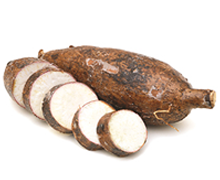
Cassava
manihot esculenta
Good starchy food source. Considerable amount of calcium, Phosphorus and vitamin C is rich in roots. Use as staple food as well as chips, alcohol and fuel productivity. Comparatively low water and nutrient requirement. Therefore thrive well in marginal lands.
Released Varieties
Climatic requirements/ Areas suitable for cultivation
Up to 1500m elevation. Cultivate throughout the year with in broad range of soil and climate condition.1000-1500mm rain fall and 25-29 oC Temperature is needed.
Soil
Suitable pH is 5-6. Water log, and Alkaline Soils are not suitable
Cutting requirement
12000-13000 cuttings/ha ( for 90 cm x 90 cm spacing)
For high branching varieties 6400-6500
For export 17000-18000 cuttings /ha
Nursery Management
Direct planting of cuttings.
But Special Cultivation can be maintained to obtain healthy vigorous cuttings. However disease management in this cultivating will avoid disease spreading via planting materials
Land preparation
Tillage and plant on set of rain
Planting
In wet zone plant in both Yala and Maha season. In Dry Zone plant in Maha season
Single holes or Ridges can be used.
Bag cultivation of cassava can be observed in different locations. In this method, 50 kg polysacks filled with loam soil are used.
Spacing
High Branching 125 x 125 cm
For Export 75 x 75 cm
Medium Branching type 90 x 90 cm
Fertilizer
Add organic fertilizer and add inorganic as recommended by Department of Agriculture
Times for apply | Urea kg/ha | TSP kg/ha | MOP kg/ha |
After 15 Days of planting | 85 | 120 | 125 |
After 2.5 -3 Month of Planting | 85 | – | 60 |
After 4-4.5Month of Planting | 85 | – | 60 |
Water supply
At the early stage water supply or soil moisture is important.
Weed Control
Weed Control is important in the beginning of the crop until crop cover the ground
Pest Management
Whiteflies act as vector of viral disease. Therefore spraying of neeam extracts. Live fencing, mix cropping with maize and water spraying from top would be useful to control the whiteflies vectors
Disease Management
Symptoms
- Yellow, green spots appears on the leaves
- Curly leaf and reduced leaf area with irregular shape
- Stunting of plants, plant gradually getting weak and the yield also decrease.
Disease Transmission
- The spread of the disease is mainly through the cuttings which taken from diseased plants for propagation.
- Whitefly can also transmit the disease among crops.
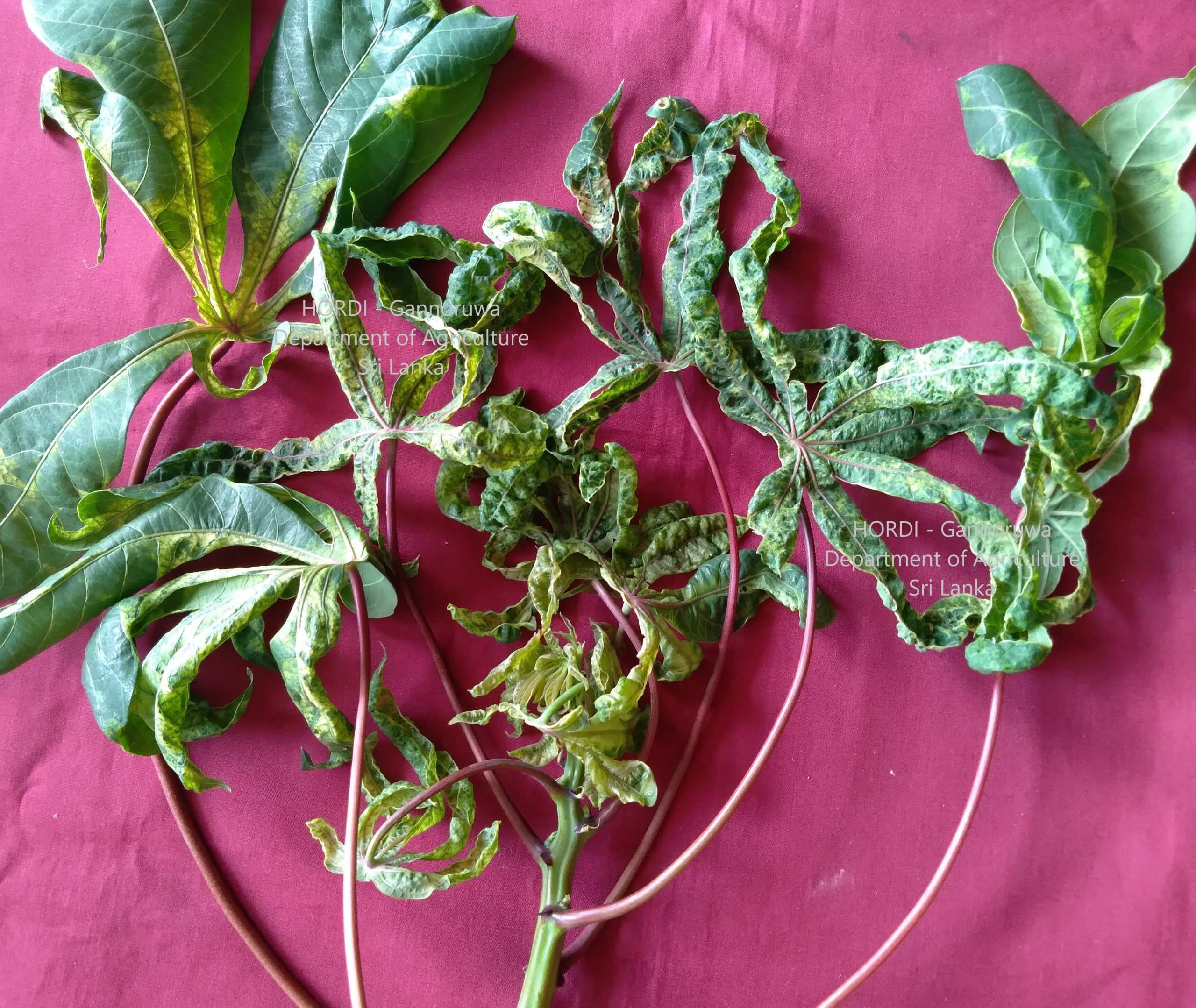 | 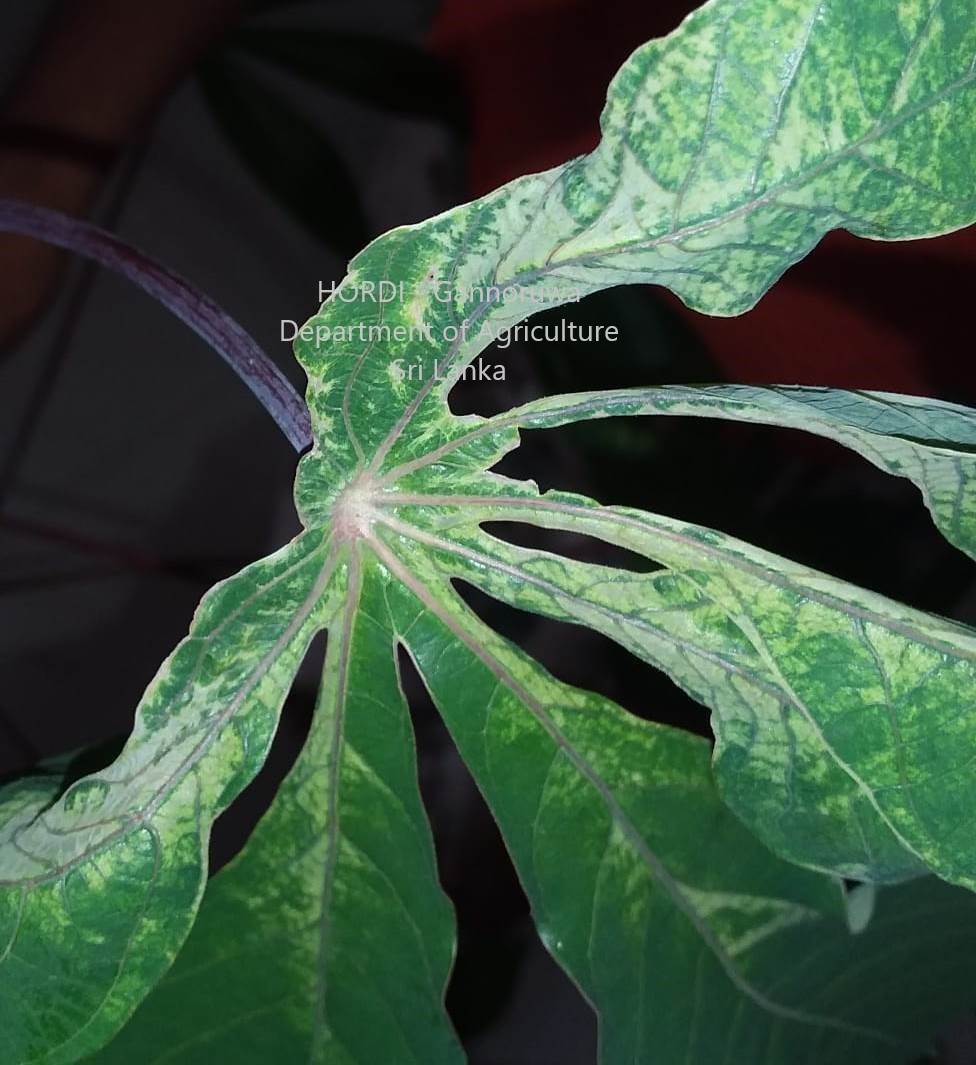 |
Management
- There is no treatment once this disease is established
- Use only healthy cuttings for planting. For commercial cultivation, obtain the cuttings after filed testing
- Remove and destroy diseased plants
- Remove wild cassava, wild cloves, wild rubber, wild rubber and cuppamania from the field of cultivation which have been identified as other host plants for this virus.
- Don’t start a new plantation area near to the diseased field. In such a case, firstly remove all the diseased trees from the old plantation areas and destroy them
- Always remove the weeds around the crops and keep the field clean
- Mark diseased plants using paint (If only one branch has virus symptoms) and It will make easy to separate and remove during the harvesting
Causal organism: This disease is caused by Mycosphaerella spp. &
Disease Transmission
- By infected crop residues and wind
- High humidity is a favorable factor for the spread of this disease.
Symptoms
- Can Appear brown spots on the leaves
- Usually the mature lower level leaves are infected first and when then the damage is severe, also the upper level leaves are infected
- Leaves turn to yellow color and then defoliation
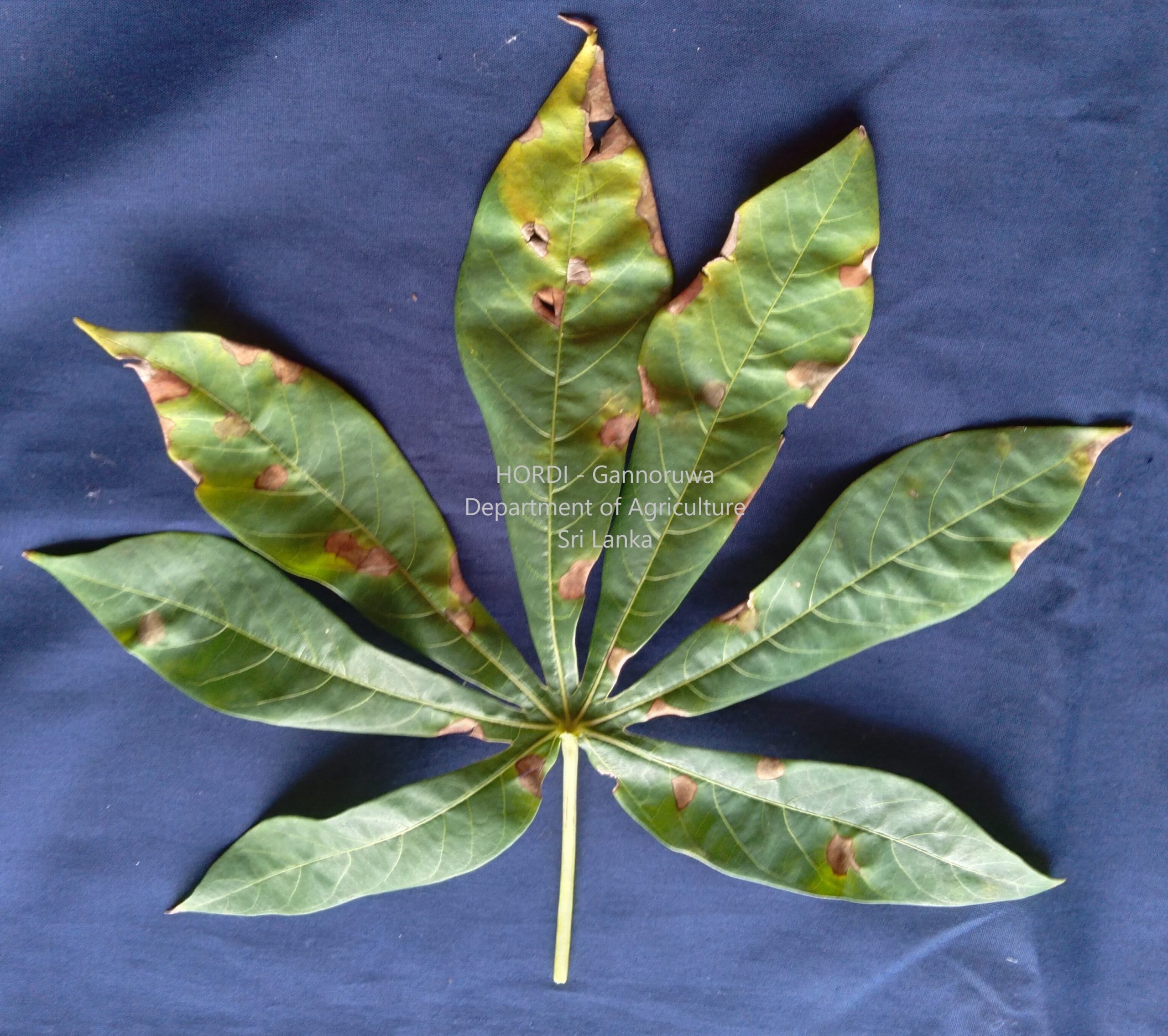 | 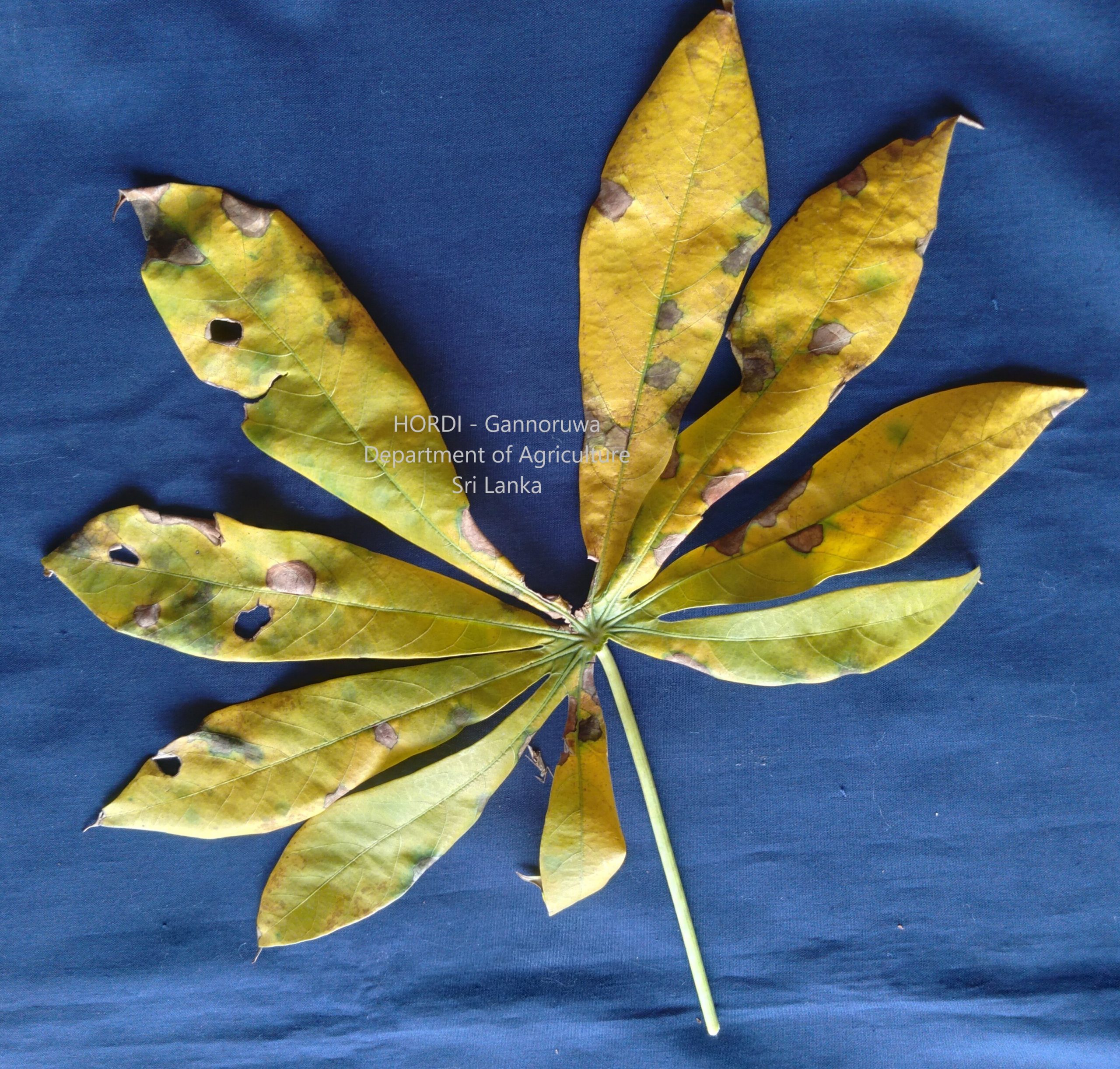 |
Management
- When home gardening, remove all infected leaves and burn.
- In commercial field, Apply the following recommended fungicide to the leaves to control the spread of the disease when the disease is common when the plants are young.
- Mancozeb 80 % WP- 32 g per 16 liter tank of water
Causal organism : This is caused by Sclerotium spp. which live in the soil
Symptoms
- Root and stem rotting of the plants in the cultivation area
- The leaves turn the yellow color and then the plant dries up and dies
- White fungal networks can see at the base of the plant.
Disease Transmission
Spread by infected soil and water
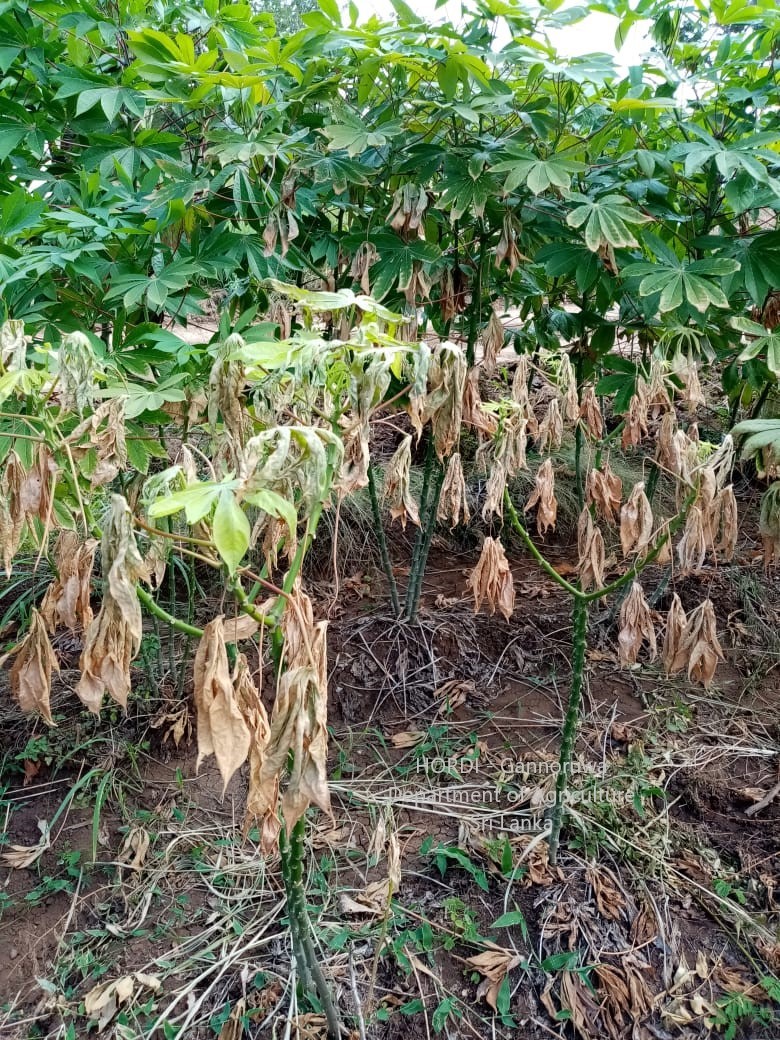 | 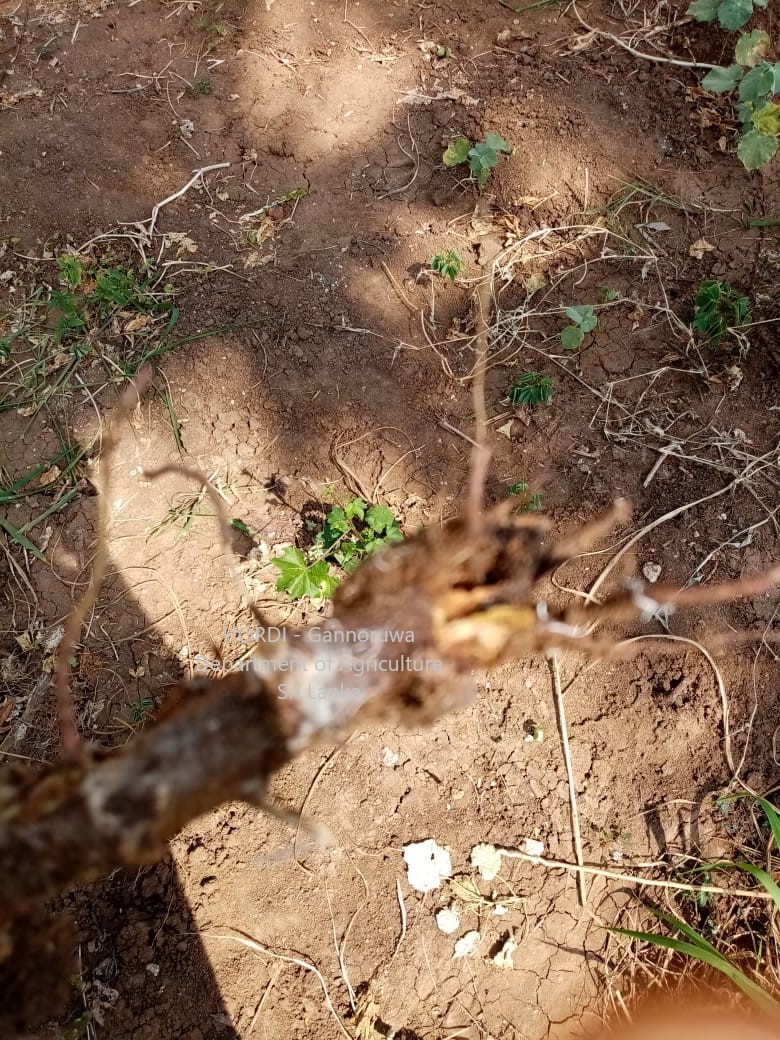 |
Management
- Waterlogging of the soil is favorable for the spread of the disease, so soil drainage should be improved. If it is paddy land, drainage can be improved by using deep drains
- Remove diseased plants from the field along with the soil as soon as the disease appears in the crop.
Harvesting
Harvest at 9Month – 12Month. Only kirikawadi can be harvest from 6 month
Yield
35-40 t/ha

